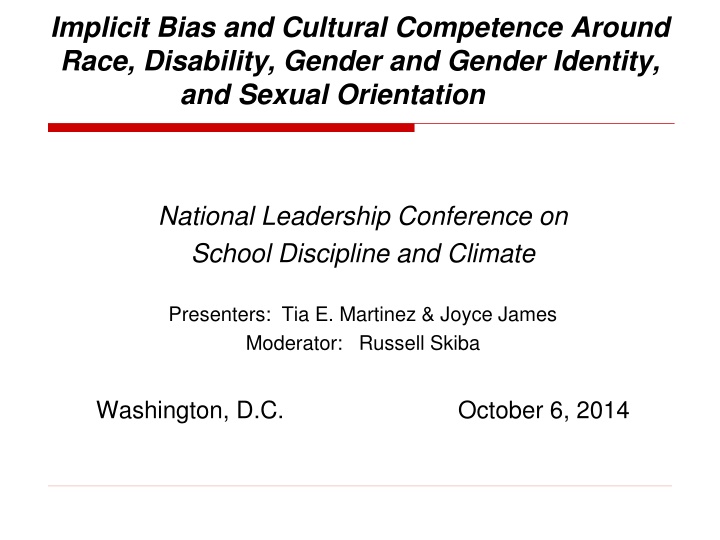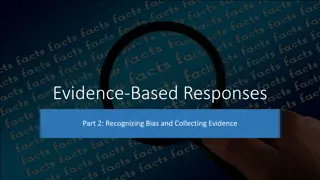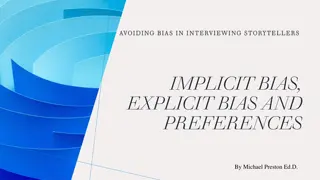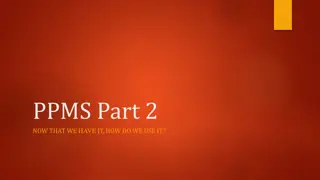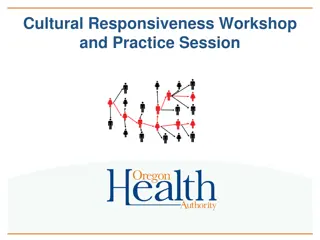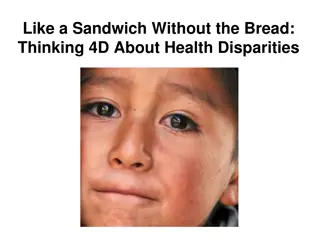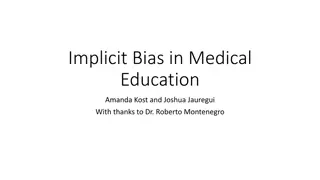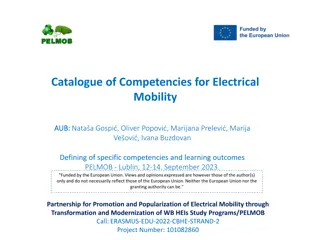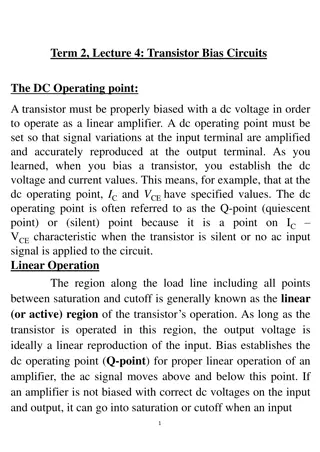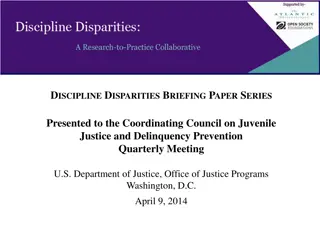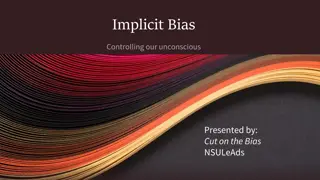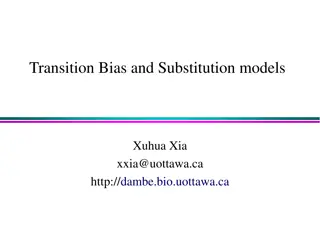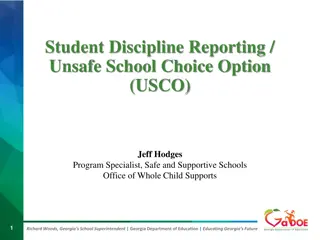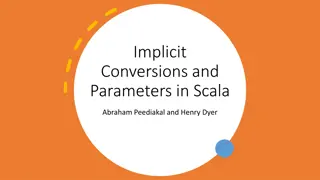Addressing Disparities in School Discipline: Understanding Implicit Bias and Cultural Competence
This content delves into the intricate issues surrounding implicit bias and cultural competence in school discipline, focusing on disparities related to race, disability, gender, gender identity, and sexual orientation. It discusses the factors contributing to disproportionate disciplinary actions, challenges deficit thinking, explores the role of poverty in explaining disparities, and evaluates disciplinary patterns among black students. Through various studies and analyses, it emphasizes the need to move towards actionable strategies and highlights the persistent nature of discipline disparities even after considering factors like behavior severity and peer ratings.
Download Presentation

Please find below an Image/Link to download the presentation.
The content on the website is provided AS IS for your information and personal use only. It may not be sold, licensed, or shared on other websites without obtaining consent from the author.If you encounter any issues during the download, it is possible that the publisher has removed the file from their server.
You are allowed to download the files provided on this website for personal or commercial use, subject to the condition that they are used lawfully. All files are the property of their respective owners.
The content on the website is provided AS IS for your information and personal use only. It may not be sold, licensed, or shared on other websites without obtaining consent from the author.
E N D
Presentation Transcript
Implicit Bias and Cultural Competence Around Race, Disability, Gender and Gender Identity, and Sexual Orientation National Leadership Conference on School Discipline and Climate Presenters: Tia E. Martinez & Joyce James Moderator: Russell Skiba Washington, D.C. October 6, 2014
Moving from Deficit Thinking to Actionable Variables Why would we not take immediate action to reduce disparities? If disproportionality was due to poverty If disproportionality was due to different rates of behavior
Can Poverty Explain Disproportionality? Discipline is related to poverty Poverty makes a significant, but small and inconsistent contribution, but... Effects of race remain after taking poverty into account
Do Black Students Misbehave More? Of 32 infractions, only 8 significant differences: White students referred more for: Smoking Vandalism Leaving w/o permission Obscene Language Black students referred more for: Disrespect Excessive Noise Threat Loitering Skiba, R.J., Michael, R.S., Nardo, A.C. & Peterson, R. (2002). The color of discipline: Sources of racial and gender disproportionality in school punishment. Urban Review, 34, 317-342.
Consistent Failure to Support the Differential Behavior Hypothesis Differences more likely to be minor, rather than major behavior (e.g., defiance) (Gregory & Weinstein, 2008; Wallace et al., 2008) Discipline disparities persist after controlling for infraction severity (Eitle & Eitle, 2004; Peguero & Sharkarkhar, 2011; Skiba et al., 2011) Disparities persist after controlling for teacher and peer ratings (Bradshaw et al., 2010) From: Skiba, R.J. & Williams, N. (2014). Are black kids worse? Myths and facts about racial differences in behavior. http://www.indiana.edu/~atlantic/wp-content/uploads/2014/03/African- American-Differential-Behavior_031214.pdf
